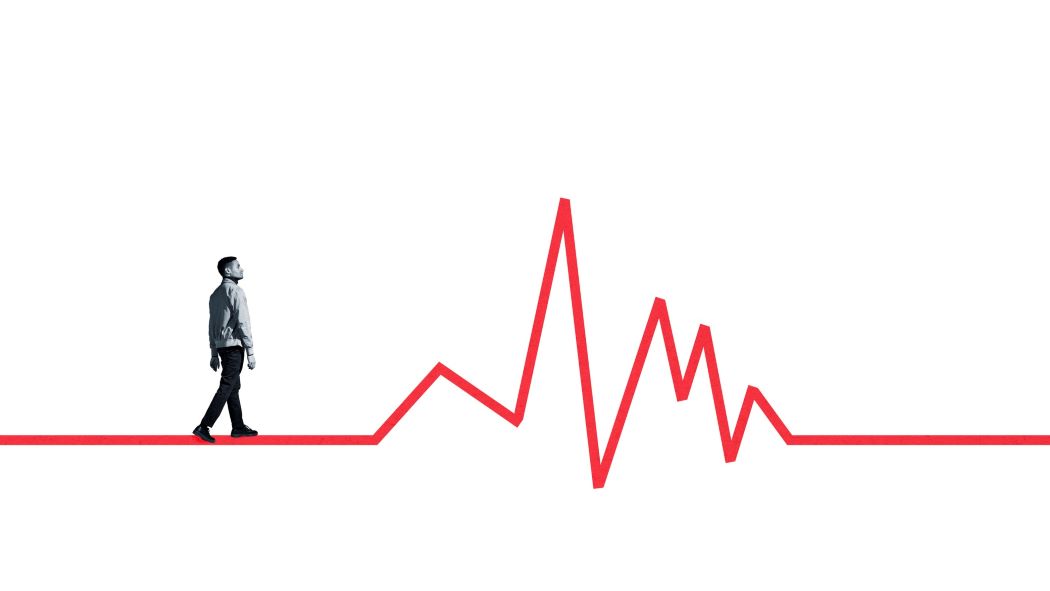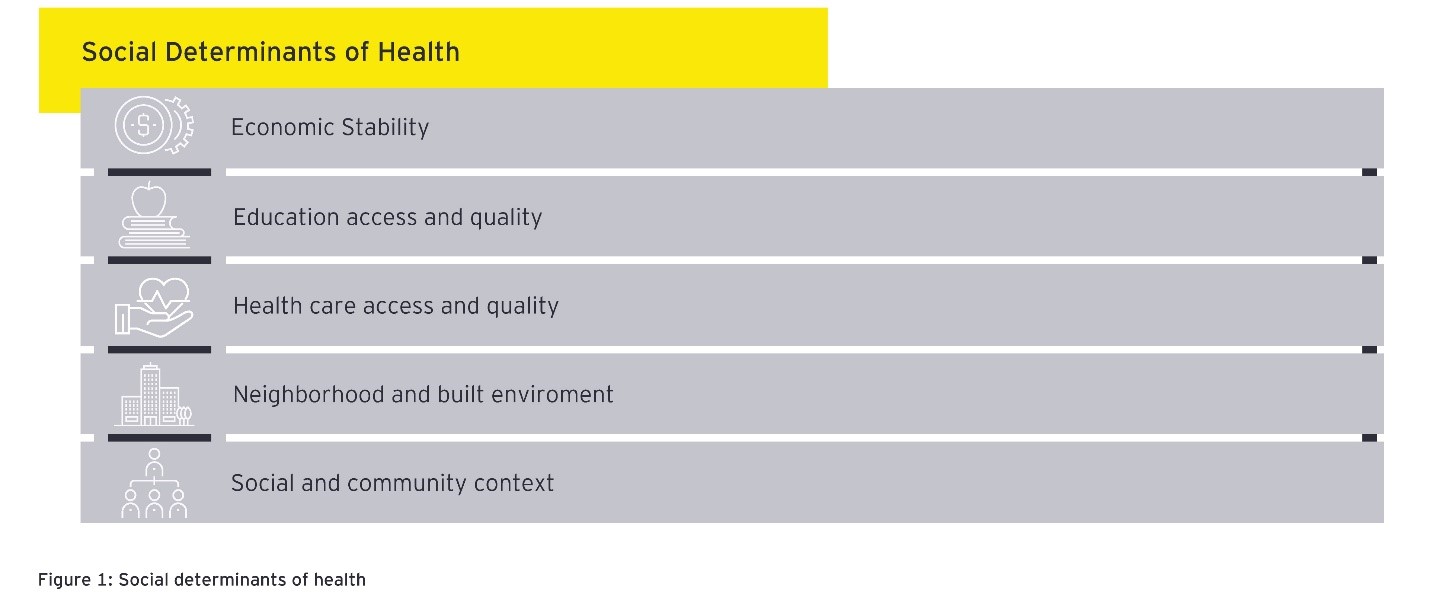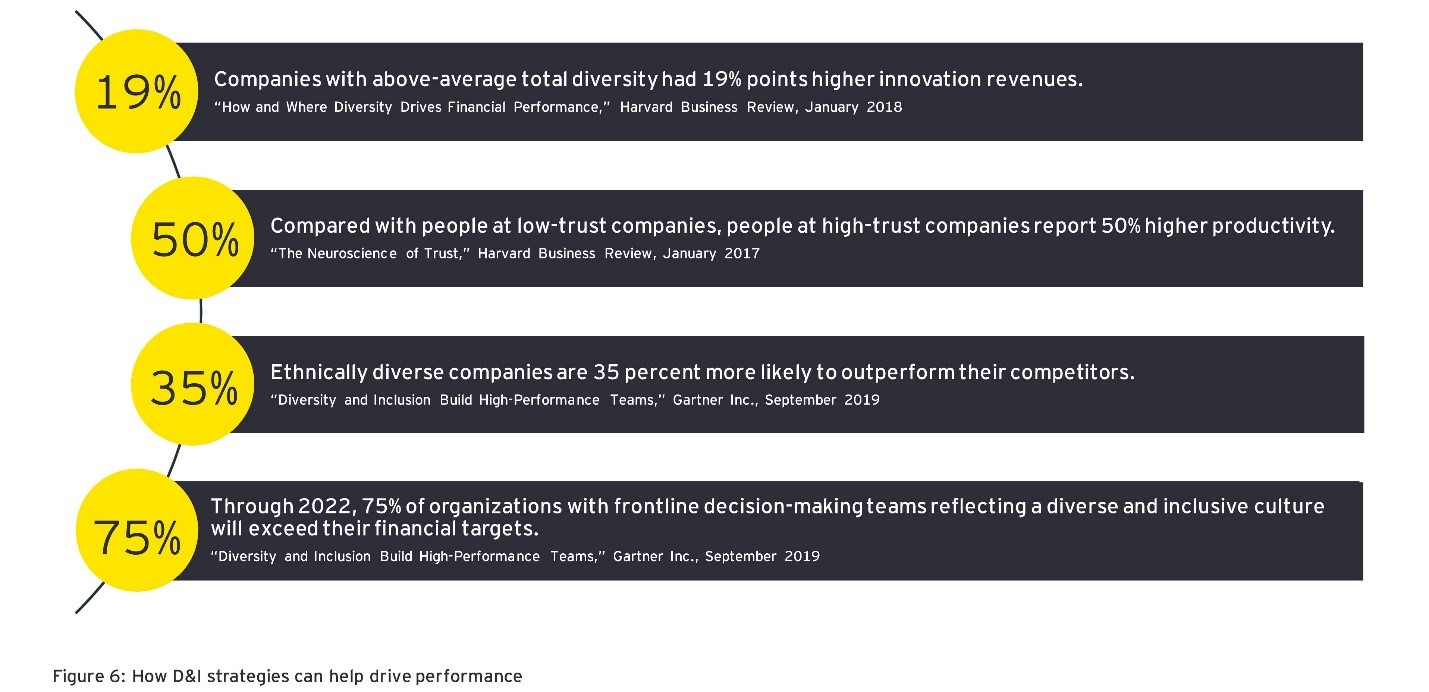
New research from EY, a global professional services organization, encourages companies both within and outside of the health care industry to consider health equity as a strategic imperative.
The research, which dives into the business case for health equity, focuses on how digital technology – and mobile, specifically – can play a role in eliminating health disparities. According to EY, the onus is on businesses – both in and outside of health care – to understand social determinants of health and then use technology and infrastructure to reduce their impact on health inequities. Social determinants of health include factors such as where people work and live, access to care and education, and more (see chart from EY, below).

Image source: EY
"We look at health equity in the context of health disparities,” said Dr. Yele Aluko, MD, MBA, chief medical officer at EY Americas and director of EY Center for Health Equity, in an exclusive interview with Cigna’s Newsroom team. “Health equity is an aspirational goal that has not been realized as of yet. It’s a circumstance that occurs when every person has the opportunity to attain and maximize their full health potential. This happens when no one is at a disadvantage to achieving this potential regardless of their social position or other socially determined circumstances.
Health inequity exists because of the presence of health disparities – different outcomes for specific vulnerable populations or demographics, Aluko said. An example is the fact that there have been more deaths, more hospitalizations, and more sickness related to COVID-19 within the Black and Hispanic communities. “By eliminating health disparities we can get closer to achieving health equity,” he said.
The Business Case for Health Equity
Eliminating health disparities equals a projected $350 billion+ return to society, Aluko said. And according to the CDC, more than 180 million people (55% of the U.S. population) receive health benefits through their employers. As such, the onus is on health system employers to foster workforce equity, which in turn will sensitize organizational culture to be more enabling of health equity delivery. More broadly, having a diversity, equity, and inclusion strategy across all industries isn’t just the right thing to do. It’s good for business. After all, companies with above-average diversity have higher revenues, more productive employees, and are more likely to outperform their competitors.

Image source: EY
Aluko also said that programs that help drive resiliency in the workforce can help narrow the health disparities gap, especially when they are focused on specific vulnerable populations. These programs help to reduce absenteeism and increase productivity, which leads to greater long-term ROI.
“There are short-term opportunities and long-term opportunities,” Aluko said, adding that investing in communities to address the social determinants of health is a long game, and that the business case for doing so will need to be modeled over decades. “But,” he added, “simply being proactive around vulnerable populations and investing in communities through education, transportation, and building awareness can help reduce unnecessary hospital visits and admissions, providing more efficient care coordination, where more preventive measures are put in place and more interaction with community-based organizations enable continuity of care to reduce waste in the health system.”
Embracing the Digital Revolution While Staying Mindful of the Digital Divide
COVID-19 has shown us the magic that can happen when companies embrace digital platforms and technology. Telehealth is a good example of this. According to EY, about 65% of care was virtual at the peak of the pandemic, and that percentage is expected to linger in the 25% to 40% range as we start to return to “normal.” Cigna's own data supports these numbers, too.
“Digital can help optimize health care delivery in general, but there is a risk of digital divide,” Aluko said.
Rachel Hall, the U.S. digital health and smart health experience lead at EY, said that when we talk about health care access and digital technology, it is important to understand which populations have access to computers, to mobile devices, to broadband, and which don’t. It’s not just about launching digital services, she said.
“Instead, it’s about addressing those populations that don’t, for example, have network connectivity, and do that at a scale and at a speed so that all communities can be served,” she said.
Hall stressed that understanding social determinants of health will be essential for addressing inequities. Understanding the social factors, like a lack of broadband, for example, or the fact that 25% of all U.S. households do not have access to a personal computer, ensures that organizations can provide the right technology and infrastructure to support individuals and interact with them based on their preferences. Companies planning health equity strategies must take into account this digital divide that currently exists, she said.
“A health equity strategy must be a strategic imperative for organizations, and secondarily, there must also be a digital strategy to help enable the health equity strategy,” Aluko added.
EYs research does note that a high percentage of U.S. households – regardless of race or economic status – own mobile devices, which could be the key to making digital connectivity and digital care more accessible.
Four Steps to Make Progress Toward Achieving Health Equity
According to EY, there are four things that companies need to do right off the bat to make achieving health equity a strategic priority:
-
Get the board involved in the early stages of planning.
-
Develop metrics to measure your efforts and figure out who is accountable for what.
-
Start with addressing disparities in your own organization.
-
Do your research and identify the gaps in access so you can figure out how to fill those voids.
To read the full study from EY, click here.

Cigna Proactively Addresses Social Determinants of Health to Reduce Individual Health Disparities
Continue reading to learn about ways that employers can begin addressing SDoH through benefit and wellness strategies, as well as Cigna's approach to addressing SDoH as a health service company, and an employer.